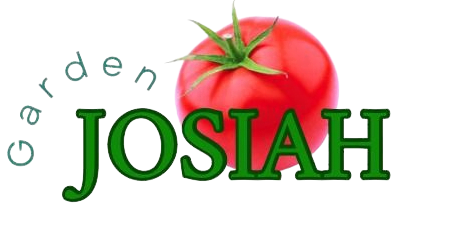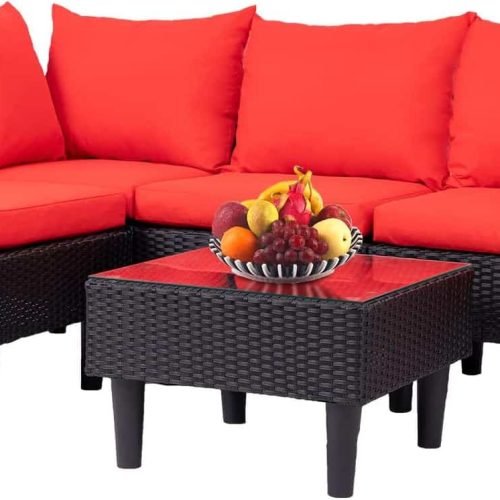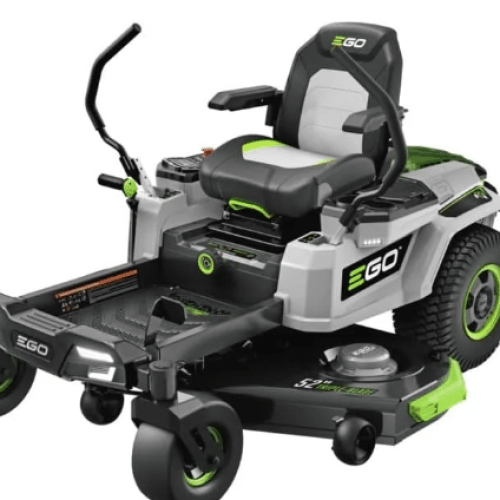Many think winter means no fresh food from home. But gardeners like Jack Furst prove this wrong. They use old tricks to grow food even when it’s freezing.
Jack uses “hotbeds” made from rotting organic stuff. This keeps plants warm, even when it’s just 13°C (55.4°F) outside. The soil gets up to 16°C (60.8°F), making it perfect for plants.
These gardeners also use waste to grow food. This way, they help the planet while enjoying fresh veggies all year. Even in tough places with mountains and cold soil, they make it work.
Key Takeaways
- Winter gardening allows for the production of fresh, homegrown produce despite cold weather conditions.
- Innovative gardeners use ancient techniques, such as “hotbeds” made from decomposing organic matter, to maintain optimal growing conditions.
- These methods often involve repurposing waste materials, promoting sustainability and minimizing environmental impact.
- Historical growing practices have proven effective in overcoming the challenges of cold-weather gardening.
- Winter gardening can be a rewarding and productive endeavor for those willing to embrace the seasonal shift.
Understanding Winter Gardening Basics
Winter gardening is about growing plants in the coldest months. It uses special structures and techniques. This way, gardeners can keep growing food even when it’s very cold.
What Is Winter Gardening?
Winter gardening uses greenhouses, cold frames, and other structures to protect plants. These tools help create a warmer spot for growing. This way, gardeners can grow leafy greens, root veggies, and hardy herbs all winter long.
Benefits of Growing in Cold Weather
- Expanded growing season: Winter gardening lets you grow food earlier in spring and later in fall. This means more harvests.
- Year-round fresh produce: With the right techniques, you can have fresh, homegrown food all winter.
- Unique crop selection: Winter gardens grow cool-weather crops like kale and Brussels sprouts. These offer different tastes and health benefits.
By facing winter gardening’s challenges and using greenhouse gardening, frost protection techniques, and season-extending structures, gardeners can discover new possibilities. They can enjoy the fruits of their labor all year.
Choosing the Right Plants for Winter Gardens
Choosing the right plants is key for a successful winter garden. Some vegetables and herbs do well in the cold. They thrive in the cooler temperatures and less daylight of winter.
Top Vegetables for Winter Gardening
- Kale: This green is a winter garden favorite. It can handle frost and even snow.
- Brussels sprouts: These small cabbages get sweeter after a light frost.
- Root vegetables: Carrots, beets, turnips, and radishes do great in winter. They produce a lot.
- Spinach: It loves the cool weather. You can plant it in late fall and harvest all winter.
- Leeks: These mild alliums are cold-hardy. They’re good to eat all winter.
Herbs That Thrive in Winter
Some herbs also do well in winter gardens. Here are a few:
- Rosemary: This fragrant herb can handle cold and even light snow.
- Thyme: It’s another cold-hardy herb. It keeps giving fresh leaves all winter.
- Sage: Its silvery-green leaves make it a beautiful and tasty winter garden addition.
- Parsley: This versatile herb can stand up to cold. It’s great for garnishes or ingredients all winter.
When picking plants for your winter garden, think about their frost tolerance. Also, consider if they can grow in low light. With the right plants, you can have a lot of fresh, homegrown food even in the coldest months.
Preparing Your Garden for Winter
Winter is coming, and it’s time to get your garden ready. By taking the right steps, you can keep growing food even when it’s cold. We’ll look at how to prepare your soil and pick the best spot for your cold-weather crops.
Soil Preparation Tips
Good soil is key for a winter garden. Start by making raised beds or hotbeds. They help with soil temperature and drainage.
Add compost or decaying plants to your soil. This gives your plants nutrients and helps them stay warm.
Choosing the Right Location
The spot you choose for your winter garden matters a lot. Pick a place that gets lots of sunlight. This helps your cold-weather crops grow strong.
Also, find a spot that protects your plants from strong winds. Wind can hurt your plants and make them struggle to grow.
“In my experience, adapting your techniques to the unique challenges of your growing environment is key to successful winter gardening. With a little creativity and persistence, you can overcome seemingly daunting obstacles.” – Jack Furst, experienced winter gardener
By getting your soil ready and choosing the right spot, you’ll have a garden that’s ready for winter. It will give you fresh, healthy food all winter long.
Planting Strategies for Cold Weather
Winter gardening requires smart planting strategies. You can sow cold-hardy plants directly in the garden. For tender varieties, starting them indoors before moving them outside is best.
Direct Sowing vs. Indoor Seed Starting
For direct sowing, choose cool-season crops like kale, spinach, and carrots. They can handle cold temperatures. Sow them in garden beds as early as late summer or fall.
On the other hand, warm-weather crops like tomatoes and peppers do better indoors. Move them outside when the frost risk is low.
Protecting Young Plants from Frost
Keeping young plants safe from frost is key. Use season-extending structures like cold frames or row covers. They keep soil warm, helping seedlings grow even in cold weather.
| Planting Method | Suitable Crops | Frost Protection Techniques |
|---|---|---|
| Direct Sowing |
|
|
| Indoor Seed Starting |
|
|
By using a mix of direct sowing and indoor starting, gardeners can grow more in winter. Season-extending structures help ensure a good harvest, even in cold months.
Winter Gardening Techniques to Maximize Growth
Winter gardening can be tough with cold weather and short days. But, with the right methods, you can keep your garden alive and produce fresh food. Tools like row covers and cold frames are key to success.
Using Row Covers Effectively
Row covers are thin, breathable fabrics that protect plants. They keep warmth in, block frost, and keep soil moist. This lets you grow greens and other hardy crops into winter.
To use row covers well, take them off on warm days. This lets air in and prevents plants from getting too hot. Choose the right cover for the weather, like a heavy one for cold or a light one for milder days.
The Benefits of Cold Frames
Cold frames are like mini-greenhouses that sit on the ground. They trap heat and protect plants from bad weather. You can make them simple or fancy, with features like temperature control.
With a cold frame, you can grow more plants and extend the growing season. Some gardeners use hotbeds to keep soil warm, even when it’s cold outside.
Using row covers, cold frames, or both can change your winter garden. These season extension and frost protection techniques help your winter garden thrive. They let you grow cold-weather crops and enjoy fresh food all year.
Harvesting During the Cold Months
Many gardeners are surprised to find they can still get fresh veggies and herbs in winter. The right varieties and cold-weather crops let gardeners keep growing and enjoy their harvests.
Best Practices for Winter Harvesting
Winter harvesting needs more care than summer picking. Here are some tips for a successful harvest:
- Watch your crops closely. Winter veggies like Brussels sprouts and kale have signs to show when they’re ready.
- Get your harvest before frost or snow. This prevents damage to the plants.
- Pick in the warmest part of the day. This keeps your produce fresh.
- Use sharp, clean tools for clean cuts. This helps avoid damaging the plant.
- Store your harvest properly. Use the fridge or a cool, dry spot to keep it fresh longer.
Signs It’s Time to Harvest
Knowing when to pick your winter crops is key. Look for these signs to know it’s time:
- Root Vegetables: Carrots, beets, and parsnips are ready when the tops show and the roots are big enough.
- Leafy Greens: Kale, spinach, and Swiss chard are ready when the leaves are big enough to pick without harming the plant.
- Brassicas: Broccoli, cauliflower, and Brussels sprouts are ready when the heads or sprouts are fully grown.
- Winter Squash: Acorn, butternut, and spaghetti squash are ready when the rind is hard and the stem starts to dry.
With planning and attention, gardeners can enjoy a rich winter harvest. They can keep growing and enjoying their homegrown food even in the cold months.
Maintaining Your Winter Garden
Keeping your winter garden healthy needs regular care. It’s important to check the soil moisture, as plants can dry out even when it’s cold. Make sure to clear snow from covers and frames to let in air on warmer days. These steps can greatly help your plants stay healthy and productive.
Pest Control in Cold Weather
Pests and diseases don’t stop when it gets cold. Some can even do better in a winter garden’s sheltered spots. Use organic pest control, like introducing helpful bugs or natural repellents, to protect your plants. Keeping your garden clean by removing sick leaves and debris also helps prevent problems.
| Pest Control Technique | Effectiveness in Winter Gardens |
|---|---|
| Beneficial Insects | Highly effective in controlling aphids, spider mites, and other pests that can thrive in protected winter environments. |
| Neem Oil | A natural insecticide that can be used to control a variety of pests, including those that may overwinter in your garden. |
| Diatomaceous Earth | An effective, non-toxic method for controlling crawling insects, such as slugs and snails, which may be a problem in your winter garden. |
By being watchful and using early pest control, your winter garden can stay healthy and productive, even in the coldest times.
Indoor Winter Gardening Options
When winter comes, gardeners with little outdoor space or in very cold places can still grow fresh food indoors. You can use containers, hydroponics, or vertical systems to grow winter vegetable varieties and greenhouse gardening indoors. These methods let you enjoy fresh, homegrown produce even when it’s cold outside.
Container Gardening for Fresh Greens
Container gardening is a simple and easy way to garden indoors. You can use pots, planters, or even old containers to grow leafy greens, herbs, and other favorites. This way, you can enjoy fresh, homegrown food right in your home, even when your outdoor garden is not growing.
Hydroponics and Vertical Gardens
If you have very little space, hydroponics and vertical gardens are great options. Hydroponics grows plants in water with nutrients, saving space. Vertical gardens use wall or shelving space to grow lots of winter vegetable varieties indoors.
These indoor gardening methods help you grow food indoors, either to supplement your outdoor garden or as your main source of homegrown veggies in winter. With the right setup and care, you can enjoy fresh, nutritious food all year, no matter the weather.
Additional Resources for Winter Gardening
As winter gardening season comes, many are eager to start. There’s a lot of help out there. From books to websites, you can find everything you need to grow well in cold weather.
Recommended Books and Websites
Looking for detailed advice? Check out “The Winter Harvest Handbook” by Eliot Coleman and “The Vegetable Gardener’s Bible” by Edward C. Smith. They’re full of tips on growing in the cold. Online, sites like the University of New Hampshire Extension and Gardener’s Supply Company have great guides on winter gardening.
Community Gardening Groups and Support
But there’s more than just books and websites. Local gardening groups and extension services are great too. They offer workshops and hands-on help to tackle cold weather challenges. Joining these groups can connect you with others who share your passion for winter gardening, cold-weather crops, and season extension.
FAQ
What is winter gardening?
Winter gardening is growing plants in the coldest months. It uses special structures to protect them from frost and harsh weather.
What are the benefits of winter gardening?
Winter gardening lets you grow plants longer. You get fresh produce all year. It’s also great for growing cool-weather crops.
What vegetables and herbs are well-suited for winter gardening?
Kale, Brussels sprouts, and root veggies do well in cold. Herbs like rosemary, thyme, and sage also handle cold better.
How do I prepare my garden for winter?
Start with good soil. Use raised beds or hotbeds for better soil and drainage. Add organic matter for nutrients and heat.
Choose a spot with lots of sunlight and protection from wind.
What planting strategies can I use for cold weather?
Mix direct sowing with indoor seed starting. Plant cold-hardy plants directly. Start tender ones indoors.
Use row covers, cold frames, or hotbeds to protect young plants from frost.
How can I maximize growth in my winter garden?
Use row covers and cold frames to trap heat. They protect plants from bad weather. Some use hotbeds to keep soil warm.
When should I harvest my winter crops?
Harvest at the right time. Check for signs of maturity like full heads on Brussels sprouts or the right size for kale.
How do I maintain my winter garden?
Keep soil moist and clear snow from covers. Make sure air circulates well. Use organic pest control and keep the garden clean.
What indoor options are available for winter gardening?
Indoor gardening is great for small spaces or very cold areas. Try container, hydroponic, or vertical gardening for indoor greens and herbs.
Where can I find more resources for winter gardening?
Look for books, websites, and gardening groups. Local agricultural extensions offer support and workshops on winter gardening.
Source Links
- Gardeners told how ‘old trousers’ could protect vegetables against winter frosts – https://www.devonlive.com/news/property/gardeners-told-how-old-trousers-9739227
- Ask the Master Gardener: Advice for growing pine trees, figs and lemons in Missouri – https://www.aol.com/ask-master-gardener-advice-growing-100845147.html
- How to dry your clothes in winter without a tumble dryer – https://www.swindonadvertiser.co.uk/news/24743019.dry-clothes-winter-without-tumble-dryer/
- NJ lawmakers consider restricting use of bird feeders. Here’s why – https://www.yahoo.com/news/nj-lawmakers-consider-restricting-bird-180019452.html
- Non-profit part of ‘historic investment’ to address mounting issue in nearly 100 communities: ‘The most effective way to increase preparedness’ – https://www.yahoo.com/news/non-profit-part-historic-investment-103013997.html
- 6 real Christmas tree mistakes experts want you to avoid this year – to keep your tree looking its best for longer – https://www.homesandgardens.com/gardens/real-christmas-tree-mistakes
- 5 Home Items You Should Buy Now That Will Become Collectibles Later – https://www.yahoo.com/lifestyle/5-home-items-buy-now-104300907.html
- How to Keep Your Jade Plant Thriving for Decades (Yes, Really) – https://www.aol.com/keep-jade-plant-thriving-decades-212758396.html
- When Is It Too Late to Prune Roses Before Winter? – https://www.yahoo.com/lifestyle/too-prune-roses-winter-081600623.html
- I’ve lived near Glacier National Park for 35 years. Here are 4 things visitors need to know before visiting in the winter. – https://www.yahoo.com/news/ive-lived-near-glacier-national-120401191.html
- Union City Man Convicted Of Criminal Enterprise And Embezzlement In Family Trust Case- Faces 60 Years In Jail – https://thumbwind.com/2024/11/23/union-city-man-convicted-of-criminal-enterprise-and-embezzlement-in-family-trust-case-faces-60-years-in-jail/
- How gut health could boost your mood this winter – https://www.dailyrecord.co.uk/lifestyle/how-gut-health-can-boost-34151027
- Fall is an ideal time to plant camellias in your garden. Here’s what you should know – https://www.yahoo.com/lifestyle/fall-ideal-time-plant-camellias-101528202.html
- 2024-25 Caledonia High School Winter Sports Preview – https://www.hometownsource.com/caledonia/sports/2024-25-caledonia-high-school-winter-sports-preview/article_d785fc3a-a769-11ef-bacb-db0401bec63c.html
- Tuscola track star Patterson to continue career at Ball State – https://www.news-gazette.com/sports/tuscola-track-star-patterson-to-continue-career-at-ball-state/article_e453f0c0-a796-11ef-9361-6b4ed25d4300.html
- Winter alternatives to Christmas trees Winter alternatives to Christmas trees – ATV Today – https://www.atvtoday.co.uk/246441-christmas/






